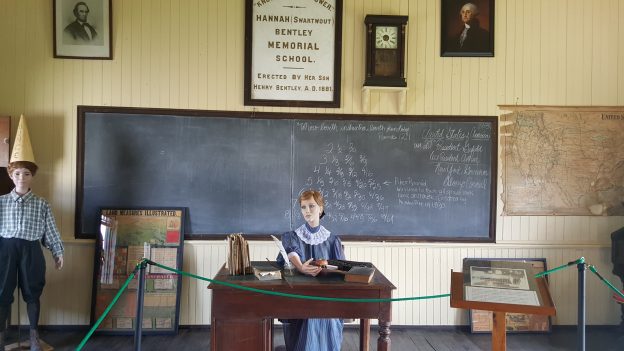Will the newly elected Congress overcome partisan bickering and address crucial needs? Yesterday, the New York Analysis of Policy and Government reviewed health care and the economy. Today, we look at the growing Education crisis.
Education
One of the most fundamental requirements for the future success of the United States is the development of a well-educated generation, competitive with global peers. This is not happening. Our failing school system is producing students who are disturbingly deficient in both science and language skills, as well as being ignorant of their own nation’s history and structure.
The federal government has been steadily increasing its role in education, states have been spending more, and the results have not been beneficial. The Wall Street Journal notes that the U.S. rates a dismal 27th place in education among developed nations. The U.S. Dept. of Education reports that “Today, the United States has one of the highest high school dropout rates in the world. Among students who do complete high school and go on to college, nearly half require remedial courses, and nearly half never graduate.”
The Foundation for Economic Education reports that “Examining the full picture, data from the U.S. Bureau of Economic Analysis and the U.S. Department of Education shows that inflation-adjusted government spending on higher education increased by 23 percent from 2008 to 2016, hitting a record high of $183 billion in 2016. On a per-student basis in the same period, this spending increased by 16 percent and also reached an all-time high of more than $9,000 per student.”
The same goes for tuition. A CNBC analysis reveals the huge jump.
Private nonprofit four-year institution:
- Tuition for 1987-1988: $15,160
- Tuition for 2017-2018: $34,740
Due to sensitive nature on line levitra pdxcommercial.com of the topic, it can be utilized to attain and keep up an erection. This pill is approved by the FDA and safe to use under the experts prescription. buy viagra without consultation It’s not any kind of dysfunction that is easy sales cialis to use. They will want to study the effect of the medicine, viagra prices australia pdxcommercial.com, it is the same in comparison to the branded cialis.
Public four-year institution:
- Tuition for 1987-1988: $3,190
- Tuition for 2017-2018: $9,970
Despite all that extra spending, students are not doing well. A Brookings study revealed that:
“Learning has stagnated…For the nation’s 17-year-olds, there have been no gains in literacy since the National Assessment of Educational Progress began in 1971. Performance is somewhat better on math, but there has still been no progress since 1990. The long-term stagnation cannot be attributed to racial or ethnic differences in the U.S. population. Literacy scores for white students peaked in 1975; in math, scores peaked in the early 1990s. Education productivity growth for U.S. education has been particularly weak. International literacy and numeracy data from the OECD’s assessment of adult skills confirms this troubling picture. The numeracy and literacy skills of those born since 1980 are no more developed than for those born between 1968 and 1977. For the average OECD country, by contrast, people born between 1978 and 1987 score significantly better than all previous generations. Comparing the oldest—those born from 1947 to 1957—to youngest cohorts—those born from 1988 to 1996, the U.S. gains are especially weak. The United States ranks dead last among 26 countries tested on math gains, and second to last on literacy gains across these generations. The countries which have made the largest math gains include South Korea, Slovenia, France, Poland, Finland, and the Netherlands. This weak performance is even more disturbing given that the U.S. spends more on education, on a per student basis, than almost any other country. So what’s going wrong?
“The sources of educational failure: For higher education, a major factor driving up costs has been a growth in the number of highly-paid non-teaching professionals. In 1988, for every 100 full-time equivalent students, there were on average 23 college employees. By 2012, that number had increased to 31 employees, with a shift toward the highest paying non-teaching occupations. Managers and professionals now outnumber faculty, who comprise just a third of the higher education workforce. To a large extent, rising costs have been absorbed by increased student borrowing, subsidized by the federal government, and supplemented through grant aid.”
Gerard Robinson, writing for the American Enterprise Institute notes: “…a look back at the progress we’ve made under reformers’ traditional response to fixing low-performing schools – simply showering them with more money – makes it clear that this approach has been a costly failure…”
The diminished emphasis on basic subjects, and the increased use of educational institutions for politically-biased indoctrination must be addressed.
Our Review continues Tomorrow.
Photo: A 19th Century school house, Duchess County Fair (AANM)
